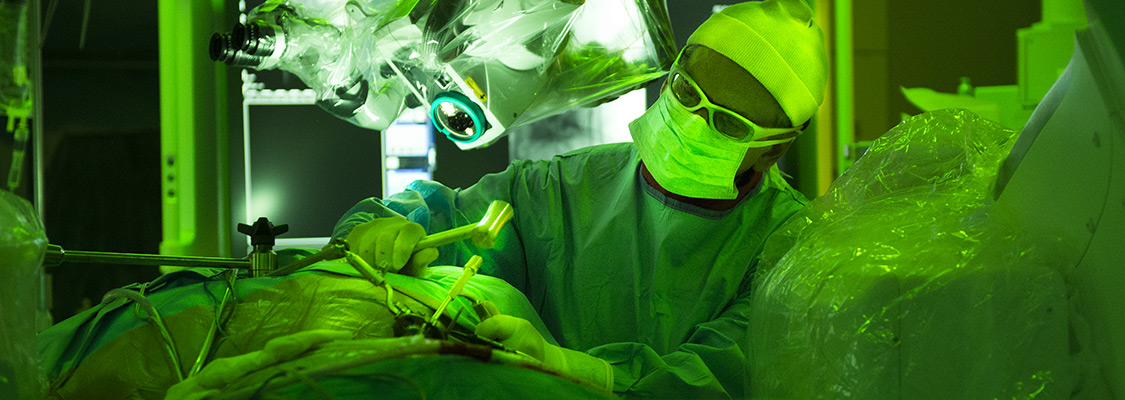Neurosurgery

The Cliniques universitaires Saint-Luc’s Neurosurgery Department is renowned worldwide for the quality and complexity of its procedures.
A thousand neurosurgical procedures are carried out each year by the Cliniques universitaires Saint-Luc’s Neurosurgery Department. With its world firsts, innovative techniques and leading edge equipment, the team regularly makes the news in medical journals and at international conferences.
Operations in greatest demand by patients from abroad
Patients from abroad represent a quarter of the patient base of the Neurosurgery Department, which is especially renowned for the treatment of 4 major types of conditions:
- Neurovascular diseases (aneurysms, cerebrovascular malformations, etc);
- Cancer tumours in the brain;
- Pathologies of the spine: herniated disc, vertebral instability or fracture, degenerative scoliosis, etc;
- Neurological pathologies that can benefit from surgical treatment: Parkinson’s disease, epilepsy, severe obsessive compulsive disorders (OCD), etc.
Innovative techniques
Where possible, neurosurgeons at the Cliniques universitaires Saint-Luc prefer to use less invasive surgical techniques. The members of the team were among the first to practise and develop these techniques.
Since the 1990s, the Cliniques universitaires Saint-Luc’s Neurosurgery Department has also offered deep brain stimulation (DBS). This technique involves placing one (or more) electrodes in the brain, for example to reduce the symptoms of Parkinson’s disease where drug treatments have become ineffective. A similar programme is being put in place for obsessive compulsive disorders.
Zeego© – a robot like no other!
The Cliniques universitaires Saint-Luc is the only hospital in Belgium to have two Zeego© 3D robotic fluoroscopy machines which make it possible to “photograph” the operation zone from every angle before, during and after the operation, like a scanner. This helps increase the degree of precision and shorten the duration of a number of procedures:
- Placement of DBS intracerebral implants;
- Insertion of screws, rods and hooks in the spine in cases of scoliosis, osteoarthritis, etc;
- Treatment of vertebral fractures;
- Removal of tumours and metastases (secondary tumours) on the spine or in the brain.
More information (for the time being only in French) : www.saintluc.be and here
